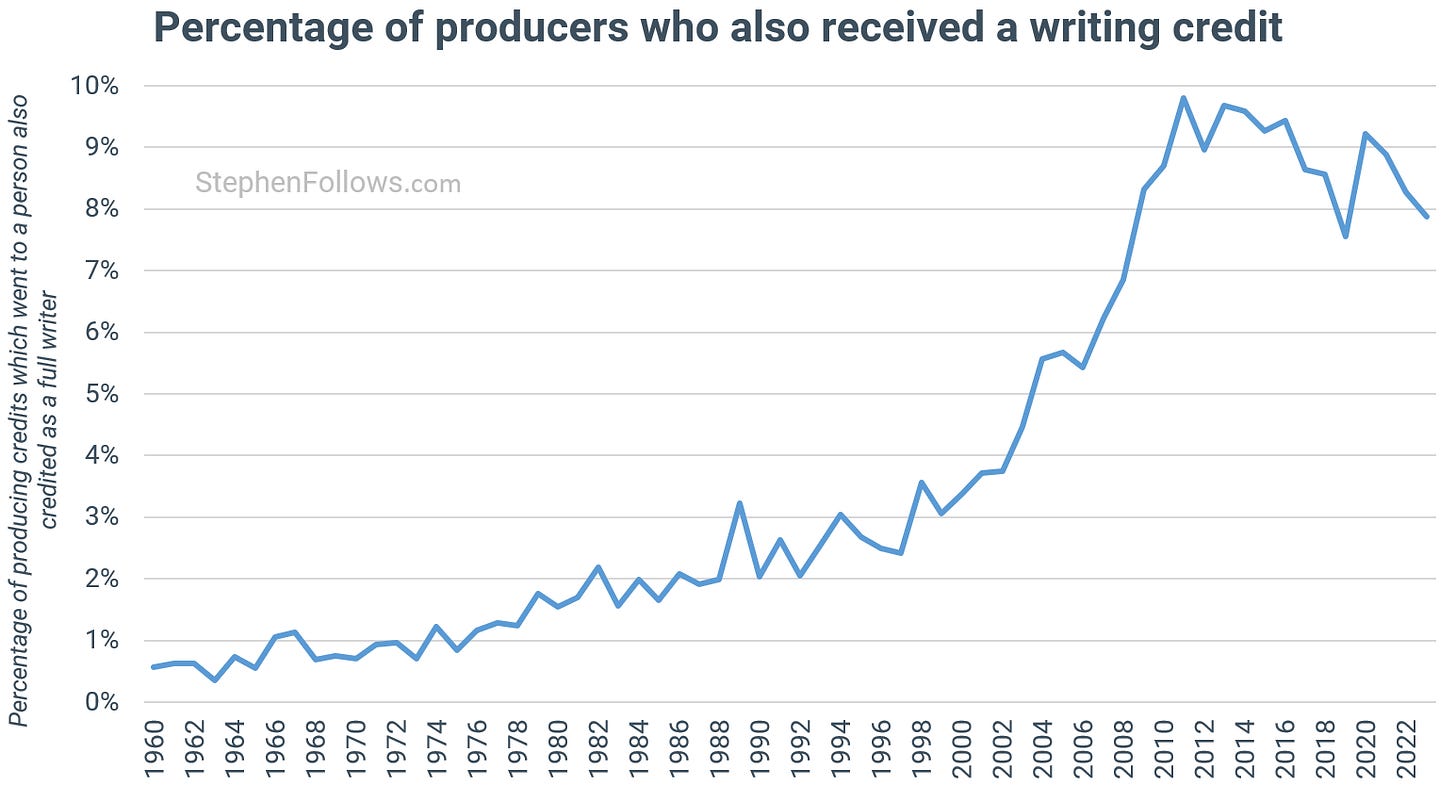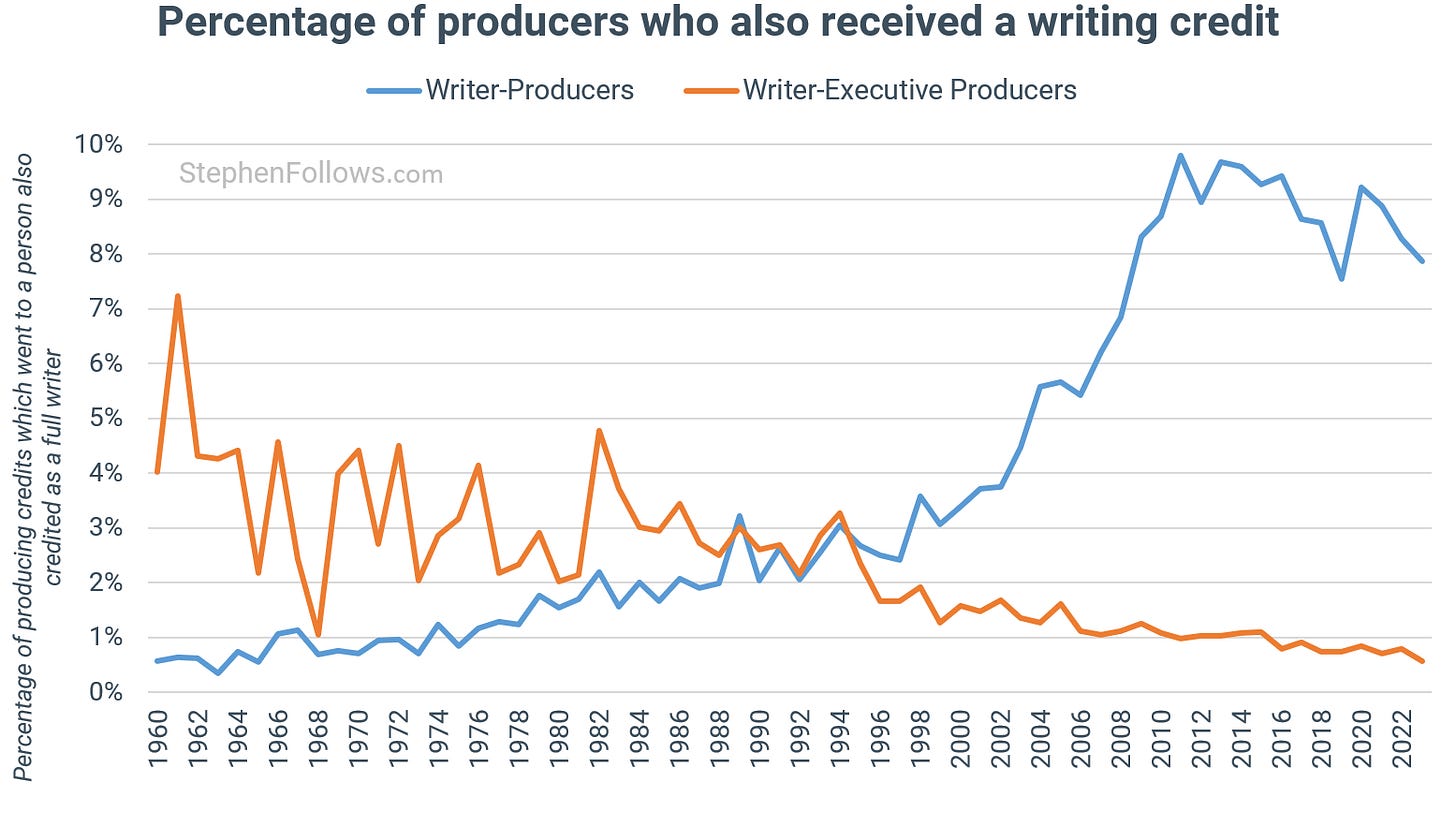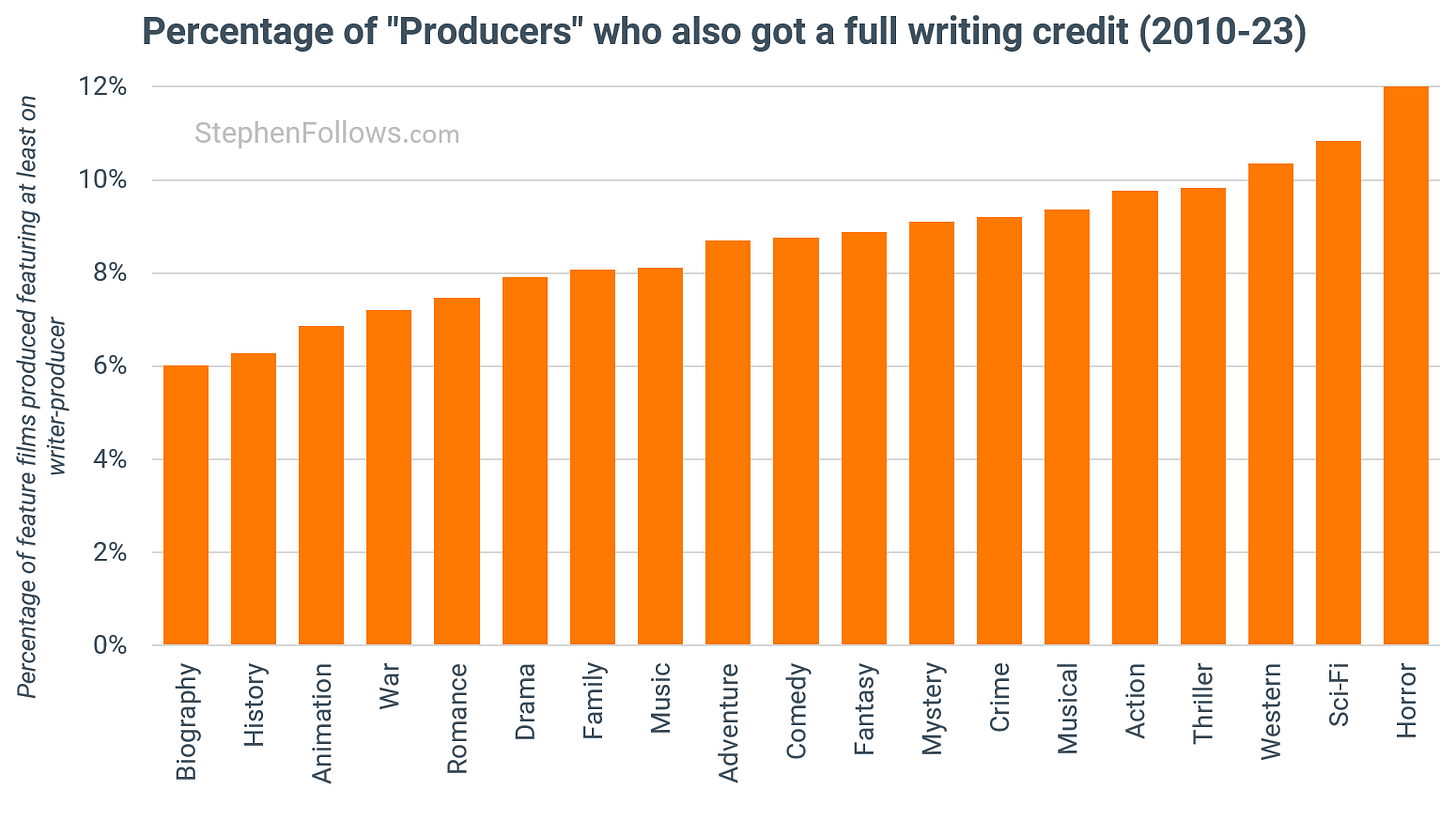Is the golden age of Writer-Producers coming to an end?
The percentage of movie screenwriters who are also producers on movies has been growing steadily over the past century but has started to wane in the past decade.
To some, the roles of screenwriter and producer can seem very different. The former is primarily rooted in the imaginary world they are creating, whereas the latter needs to tackle all limitations and restrictions of the real world.
To others, the pairing may seem a natural overlap, embodying the definition of true creative control.
The fusion of these roles - writer-producer - is far more common in television than in feature films. But this once-rare hybrid role has seen dramatic shifts in the past few decades. What was once a mark of indie auteurship became increasingly mainstream.
But just as the trend seemed to be hitting its stride, a surprising decline began.
I crunched the numbers on over half a million writing credits, and almost a million producing credits across 413,229 feature films to see what’s going on.
The Rise of the Writer-Producer
The Writers Guild of America (WGA), the body regulating screenwriting credits in America, is especially wary of producers seeking writing credits. In almost all cases the matter will go through the WGA arbitration process, requiring the producer to submit documentation demonstrating their substantial contribution to the screenplay. This can include drafts, notes, outlines, and other written materials showing that they contributed at least a third of the final screenplay.
From the early 1960s, we’ve observed a slow but consistent rise in writer-producers, individuals who receive full credits for both the screenplay and the production of the film. This trend accelerated sharply in the late 2000s, reaching its zenith in 2011 when nearly one in ten producers was also credited as a full writer.
This was the peak of a trend that seemed unstoppable — a creative confluence where storytellers took on the dual roles of crafting the narrative and shaping the production.
But in the past decade, we’ve started to see a decline.
Something is shifting in the industry, but the data doesn’t reveal the exact cause(s). Place your theories in the comments, please!
Before we leave the topic, I wanted to share three additional things I learned about Writer-Producers when conducting this research…
1. Writer-Producers are everywhere!
Firstly, when we take into account that more films are being made than ever before, it becomes apparent that the vast majority of Writer-Producers have made a film recently.
In fact, of the 54,708 people who have ever both written and produced a feature film in the history of filmmaking, 81.8% have done so this century.
What was once rather rare has become commonplace.
2. Writer-Exec Producers are a thing of the past
While the number of people with screenwriting and producing credits has risen, we see the inverse trend among Executive Producers.
Between 1960 and 1979, 4.9% of Executive Producers also received a full writing credit. However, since 2010, that figure has fallen to just 0.9%.
3. “Genre” movies are the most Writer-Producer friendly
Writer-producers are most commonly found making Horror, Sci-Fi, and Thriller movies. These are often seen as more “authored” films — driven by a single vision, akin to the European auteur model.
In contrast, Biography and History films, which are often larger in scale and require extensive research, feature fewer writer-producers.
Further reading
If you want to dig deeper into the topics from today’s piece, you may enjoy the following:
Notes
Today's research looks at fiction feature films (i.e. not animations or documentaries). It covers all films made, not just those released in cinemas. The raw data came from IMDb, The Numbers / OpusData and Wikipedia.
In this research "a full writing credit" is defined as being listed as a main writer on the films. This excludes supplementary writing credits such as being the author of the source material, the creator of characters or receiving credits such as "story by". I don't wish to diminish the value of these credits, nor the work that can sit behind them, it's just that this project is focused on what most people think of when they refer to a film's writer(s).
Likewise, a “full producer credit” here refers to people who received a producing credit substantially in the form of a “Producer”. This does not track Associate Producers, Assistant Producers, Co-producers, etc.
Get the data
Paid subscribers to the blog can download the data and charts via the link below:






This was an interesting topic. I wonder if the increase in DEI practices affected this trend you pinpointed. It seems like when it comes to horror the relation between writer and producer is tightest, because a writer who wants to make horror films almost by necessity needs to know how to attract investors, producers and distributors, and still maintain their cinematic vision. I would definitely want producer credit in something I wrote, both to have a say in production decisions, and for the potential equity if the movie succeeds in a big way, which is a strong possibility with horror.